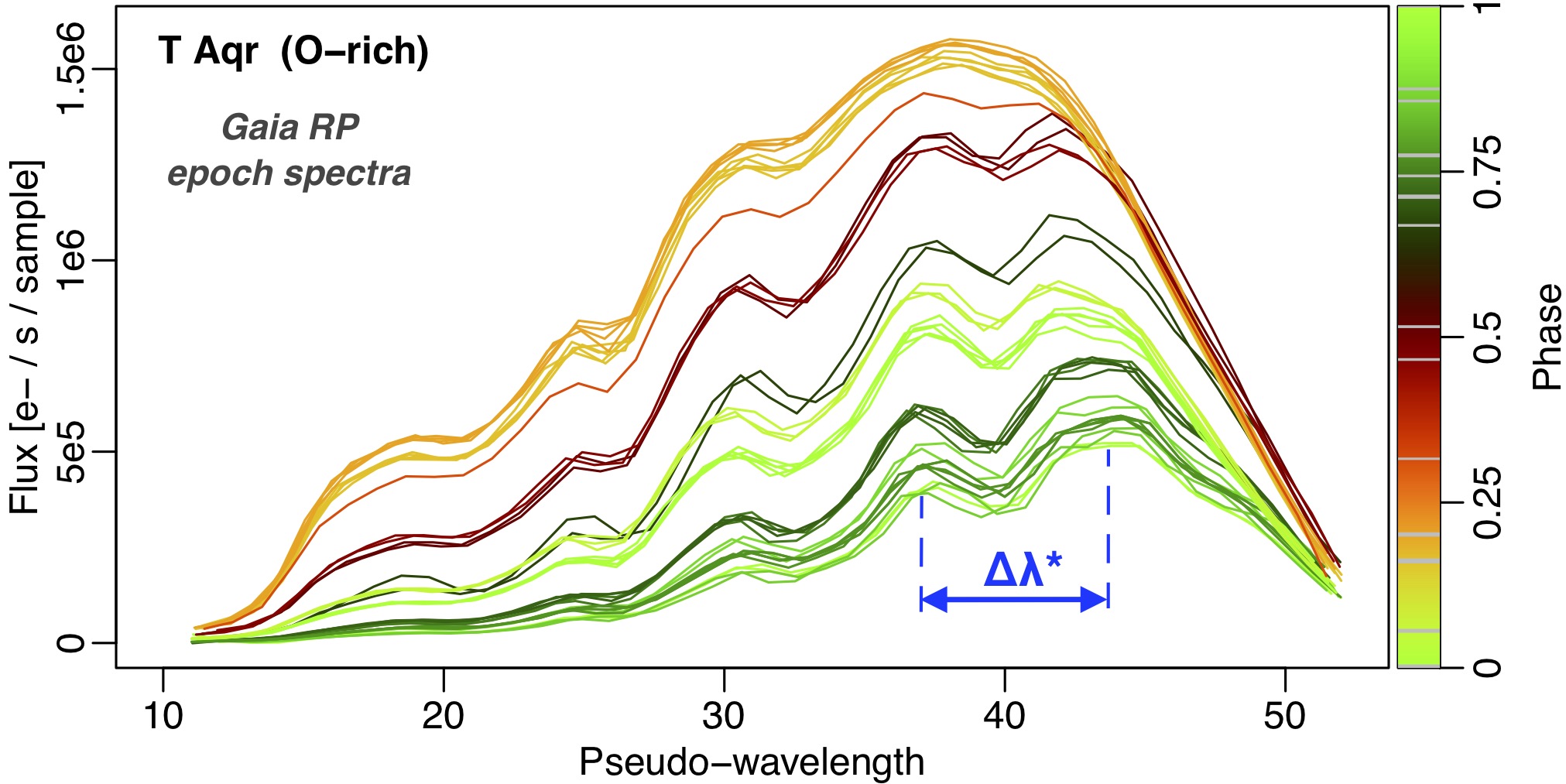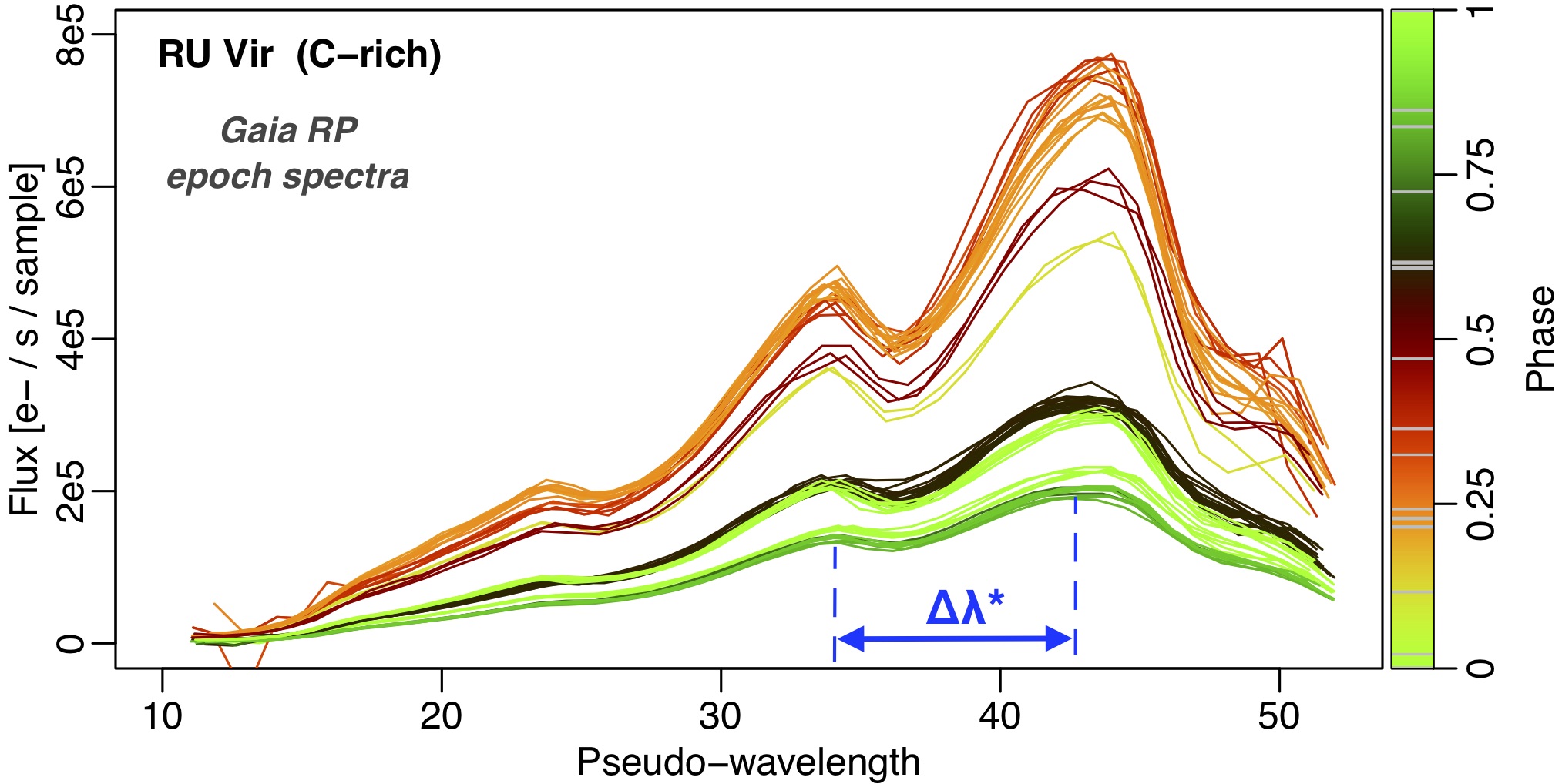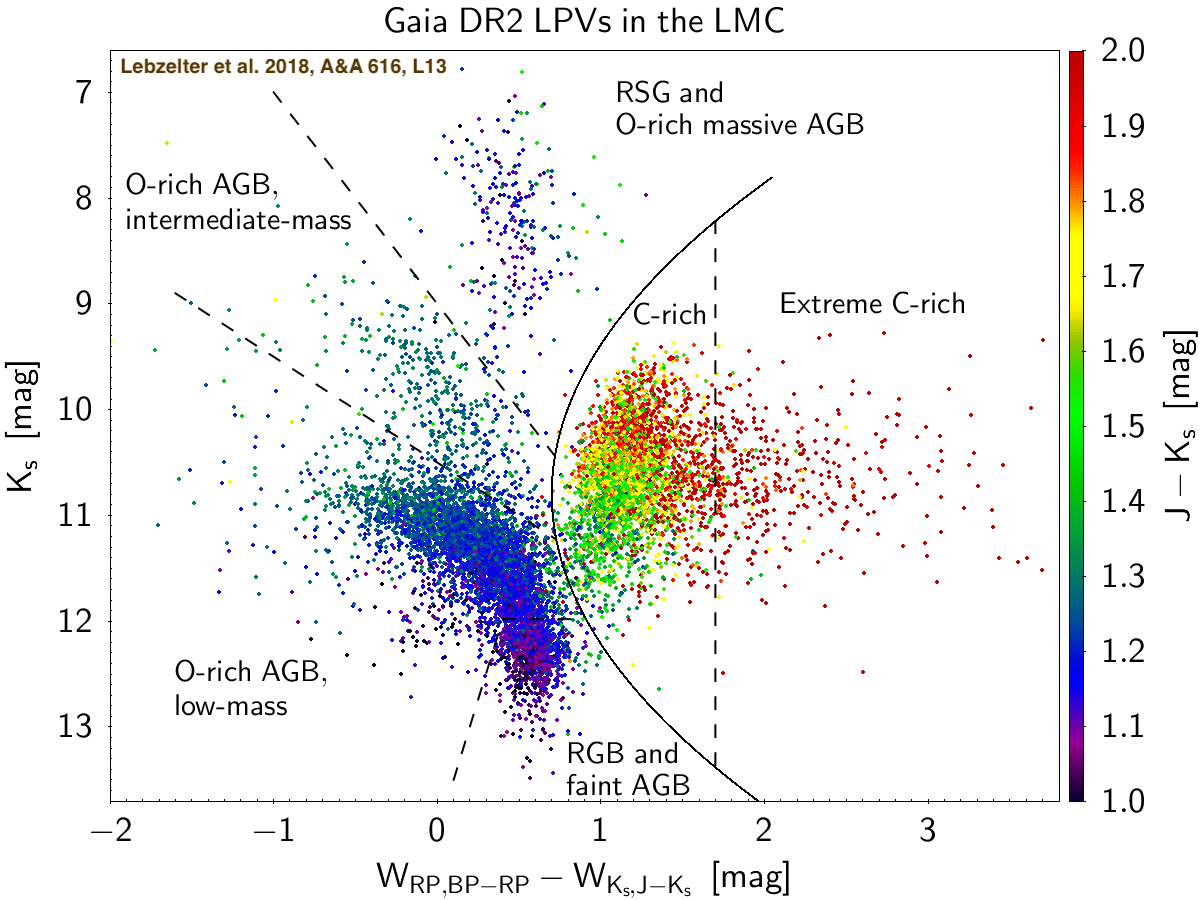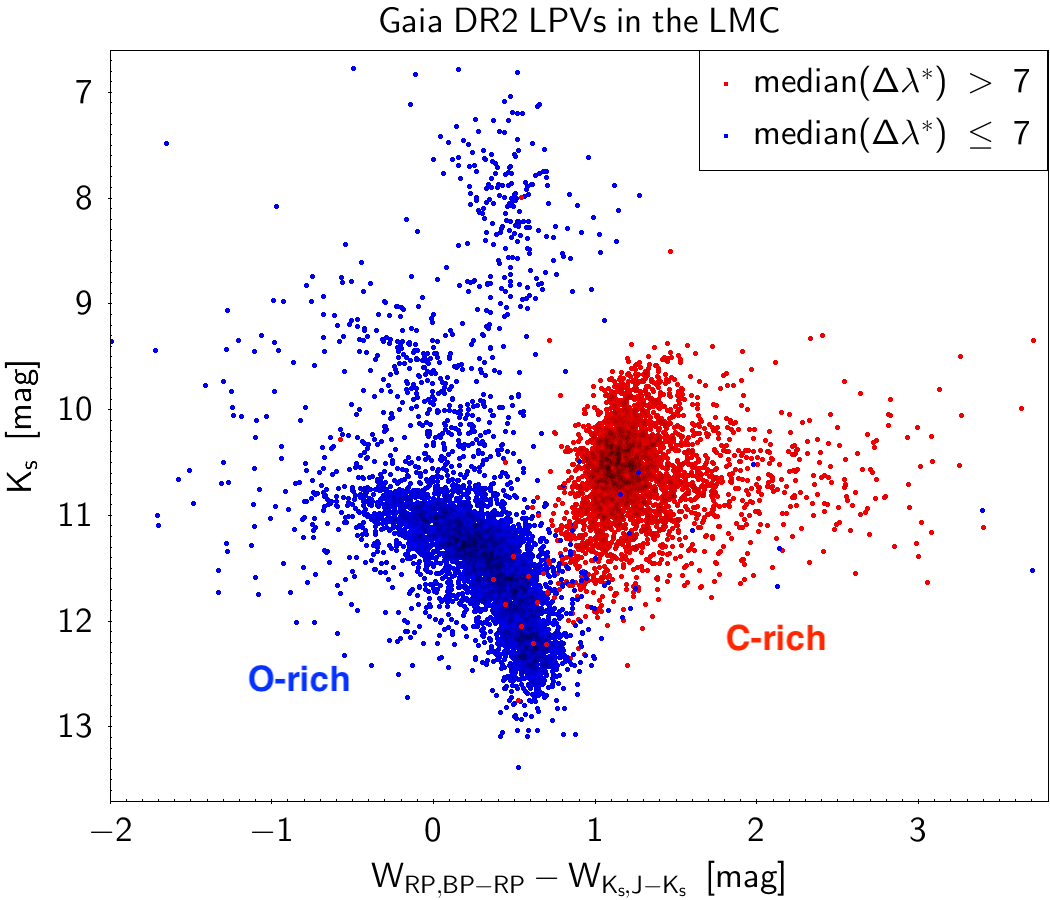IoW_20181115 - Gaia
Image of the Week |
||
Hunting evolved carbon stars with Gaia RP spectra |
||
|
Figure 1: Epoch RP spectra of the O-rich Mira star T Aqr (top panel, pulsation period of 203 days) and the C-rich Mira star RU Vir (bottom panel, pulsation period of 425 days) at various phases of their pulsation cycle, colour-coded according to the colour scale on the right of the figures. The horizontal axis represents an arbitrary, dimensionless pseudo-wavelength. The flux on the Y-axis is given in units of photo-electrons per second per sample. The displayed spectra approximately cover the wavelength range from 640 to 1100 nm. Image credit: ESA/Gaia/DPAC, Mowlavi et al. |
||
|
Long-period variables (LPVs) are red giant stars whose luminosities vary by up to several magnitudes with periods from tens to a thousand days. They are important in estimating distances (they obey period-luminosity relations) and ages (they are intermediate-age stars). LPVs are also used in tracing the structure of the Galaxy and they play an important role in the chemical evolution of the Galaxy. LPVs form two broad distinct groups according to their surface chemical signature: O-rich when the C/O ratio is less than unity, and C-rich when this ratio is above unity (the solar ratio is about 0.5). The spectra of the two classes of red giant stars are fundamentally different. Spectra of O-rich red giants show wide absorption features mainly due to TiO (Titanium Oxide) molecular bands, while the spectra of C-rich giants show wide absorption features mainly due to CH (Methylidyne) and C2 (Diatomic Carbon) molecules. These features are clearly visible in the low-resolution spectra taken by the RP spectro-photometer on board of Gaia. This is shown in Figure 1 for an example of each class. In particular, the width of the absorption features is larger for C-rich than for O-rich stars, while O-rich stars show more absorption features. These distinct spectral features enable us in principle to disentangle O-rich from C-rich stars based on Gaia RP spectra. The procedure to perform this, however, should take into account the sensitivity of the spectral features to stellar surface temperature. Long-period variables are indeed characterized by surface temperature variations up to several hundred Kelvin over a pulsation cycle, in concordance with their large brightness and colour variations. The effect of these variations on the spectral shape is shown with the case of the O-rich star, T Aqr, shown in Figure 1. In particular, the absorption feature present at pseudo-wavelengths around 40 when the star is coolest (faintest) is not present when the star is hottest (brightest). It is therefore necessary to perform spectral analysis on a subset of the epoch spectra depending on the spectral features that need to be considered. Several analysis techniques are being considered within the Gaia DPAC consortium to disentangle O-rich and C-rich LPVs taking into account the variability of their RP spectra. We illustrate in this Image of the Week one of these techniques, based on the width of the spectral absorption features, that is expected to be larger for C-rich than for O-rich giants. The pseudo-wavelength separation between the two highest peaks detected in each spectrum, Δλ*, is taken as a proxy for the spectral absorption width (see Figure 1). We compute this proxy for each epoch spectrum of a given star, and take the median value median(Δλ*). Tests performed on a sample of twelve well-known LPVs, listed in Table 2 of Mowlavi et al. (2018), confirm the larger value of the wavelength separation for C-rich stars compared to O-rich stars, with median(Δλ*)>7 for the former stars and median(Δλ*)<=7 for the latter stars.
Figure 2: Left panel: Gaia-2MASS diagram recopied from Figure 2 of Lebzelter et al. (2018). The horizontal axis gives the difference between the two Wesenheit functions WRP,BP-RP = GRP – 1.3 (GBP – GRP) and WKs,J-Ks = Ks – 0.686 (J – Ks), with GBP and GRP the Gaia integrated photometry in the blue and in the red spectro-photometers, respectively, and KS and J the 2MASS near-infrared magnitudes. See Lebzelter et al. (2018) for more details. Right panel: Same as left panel, but with the points colour-coded according to the wavelength separation between the two maxima in the RP spectra of each star, in blue if median(Δλ*)>7 and in red if median(Δλ*)<=7. Image credit for left image: Lebzelter, A&A, 616, L13, 2018, reproduced with permission © ESO]. Image credit for right image: ESA/Gaia/DPAC, Mowlavi et al.
To validate the procedure on a large sample of red giants, we consider the LPVs from the Large Magellanic Cloud that have been published in Gaia DR2. The combination of optical Gaia and infrared 2MASS photometry was shown by Lebzelter et al. (2018) to allow a clear identification of C-rich relative to O-rich stars. Their Figure 2 is reproduced in the left panel of Figure 2. In the right panel, we plot the same diagram, but colour-coded according to the value of median(Δλ*) derived from their Gaia RP spectra (unpublished in Gaia DR2). The distinction between O-rich and C-rich stars, which is here purely based on Gaia data, is unambiguous, with only very few misclassified cases. Additional procedures and validations are underway. In particular, the above technique is being adapted to be more robust against the absence of the λ*=40 absorption feature in O-rich giants, by considering only RP spectra that correspond to times when the stars are reddest in their pulsation cycles. The results are planned to be published in Gaia DR3. |
||
|
Credits: ESA/Gaia/DPAC, Nami Mowlavi, Isabelle Lecoeur-Taïbi, Maria Süveges, Thomas Lebzelter, Francesca De Angeli, Laurent Eyer, Dafydd Evans, Michal Pawlak, and the Gaia CU7 Geneva and CU5 Cambridge teams. [Published: 15/11/2018] |
- Removed a total of (9) style text-align:center;
- Removed a total of (8) style text-align:justify;
- Removed a total of (2) border attribute.
- Removed a total of (2) cellpadding attribute.
- Removed a total of (2) cellspacing attribute.
Image of the Week Archive
- Removed a total of (1) border attribute.
- Removed a total of (1) cellpadding attribute.
- Removed a total of (1) cellspacing attribute.








































 Sign in
Sign in
 Science & Technology
Science & Technology



